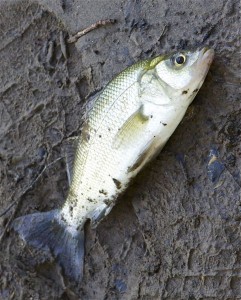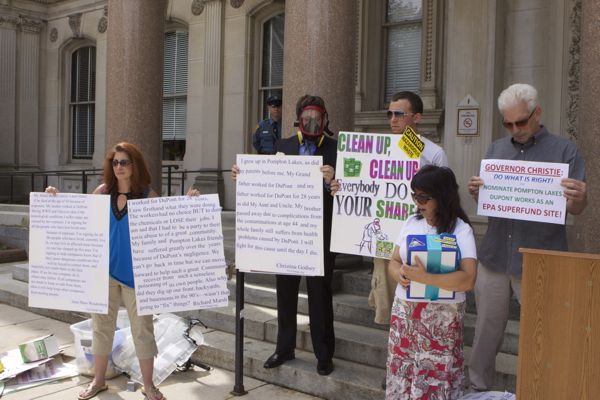Barnegat Bay Suffering “Insidious Ecological Decline”
State Must Limit Future Land Development and Reduce Current Pollution
Current DEP Standards Flawed and Gov. Plan “clearly not working”
DEP Must “Seriously Ramp Things Up” and Adopt TMDL
Rutgers Professor Michael Kennish delivered devastating testimony today to Legislators on the ecological health of Barnegat Bay and the adequacy of local and state responses to the longstanding problems. [Update: Here is Dr. Kennish’s testimony – a hearing transcript will take a week or so.]
[Here is Dr. Kennish’s most recent study: An Assessment of Nutrient Loading and Eutrophication in Barnegat Bay – Little Egg Harbor]
Kennish was blunt in his assessment.
The Bay is suffering an “insidious ecological decline” he compared to a human cancer.
What DEP and local officials are doing is “clearly not working”.
Confirming exactly what I’ve been saying for years, Kennish made it clear that DEP water quality standards and monitoring are seriously flawed and have “no scientific validity”.
I am on the road right now so will try to summarize his testimony (links and transcript will be posted later).
The cause of the ecological decline is well known – with certainty – to be nutrient pollution loadings caused by land use and development in the Bay’s watershed and along the shores.
According to Kennish, the Bay passed ecological tipping points – the carrying capacity, or what regulators call “assimilative capacity” – in the 1980’s, when the population was about 370,000 people.
Today, population has soared to over 570,000, and more than 10% of the watershed land area is paved over by development. Numerous studies show that when “impervious surfaces” from development exceed 10%, impairment results.
Current local master plans and zoning and DEP approved sewer service areas will allow currently too high population, land development, and pollution loads to increase even further.
The status quo makes it impossible to achieve pollutant load reductions necessary to restore the health of the Bay and could lead to the Bay’s total collapse as a functioning ecosystem.
Kennish began by describing the process of eutrophication in shallow coastal lagoons, and why lack of “flushing” makes Barnegat Bay more vulnerable than other Bays, like the Delaware Bay.
He explained to legislators how excessive nutrient loadings (mostly nitrogen, which acts like plant fertilizer) cause explosive rate of growth of algae, which, in turn creates a cascade of negative effects throughout the ecosystem.
Critically, the foundational relationships in the ecosystem are destroyed – leading to potential collapse, a condition scientists refer to as “azootic”.
Kennish connected the dots to show how eutrophication is a direct threats to ecosystems, fish and shellfish, human health, and the real estate and tourism based economy of the region.
Importantly, Kennish highlighted a recent episode where decaying bacteria created localized emissions of highly toxic hydrogen sulfide gas, which sent nearby exposed neighbors to local hospitals with respiratory problems.
This is just one example of what are known as “harmful algal blooms” that could be devastating to not only people’s health, but billions of dollars of real estate on the Bay and a $3 billion annual tourism economy.
Kennish said that only 1 point of Governor Christie’s 10 point management plan even addressed the problem, the “Special Area Management Plan” (SAMP). But he criticized that effort as not serious, because there has been only 1 meeting on the SAMP and it appears to be going nowhere.
Similarly, Kennish indicated that there are over 2,700 storm water basins in the watershed, and that the Gov.’s pilot program only addresses 10 of them, less than 1/2 of 1% – “we must seriously ramp things up”.
Kennish went into detail to explain why the DEP’s current water quality standards and assessment methods were flawed. First, because they rely exclusively on one indicator, dissolved oxygen (DO).
DO monitoring is flawed for 2 reasons:
1) because DEP only samples once per day in too few locations, which fails to capture large swings in DO levels throughout the day. This gives extremely misleading results, and DEP has known this for over 15 years;
2) because DO fails to reflect ecosystem health, particularly for critical indicators like submerged aquatic vegetation, fish and shellfish populations, and ecological relationships.
In response to a question by Chairman Senator Smith about whether the Bay was “impaired” under the Clean Water Act and should be required to undergo a TMDL, Kennish emphasized – with 100% scientific certainty – that the entire Bay currently is impaired and has been impaired since the 1980’s.
Kennish was asked by Senator Bateman (R-Somersert) about the role of Oyster Creek.
Kennish responded by explaining that the power plant cooling water intakes act as a “predator” in the Bay, killing billions of aquatic organisms, eggs, and larvae.
He explained why the lack of a baseline characterization of the Bay’s ecology, fish and shellfish populations has made it impossible to draw any scientifically valid cause and effect relationships between the operation of the plant and the health of the Bay and fish and shellfish popualtions.
(That flaw is no accident – lack of baseline data makes it impossible to regulate impacts of the plant, just what the nuclear industry wants).
I will be writing more about the hearings, particularly the implications for EPA intervention to direct DEP to adopt a TMDL and reject DEP’s recent attempt to delist the Bay as impaired.







